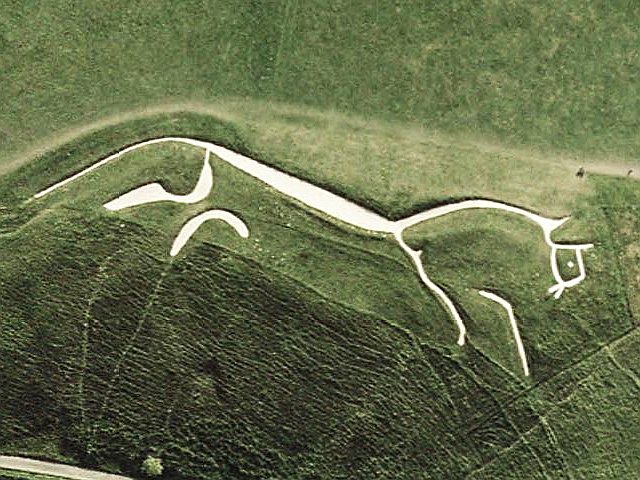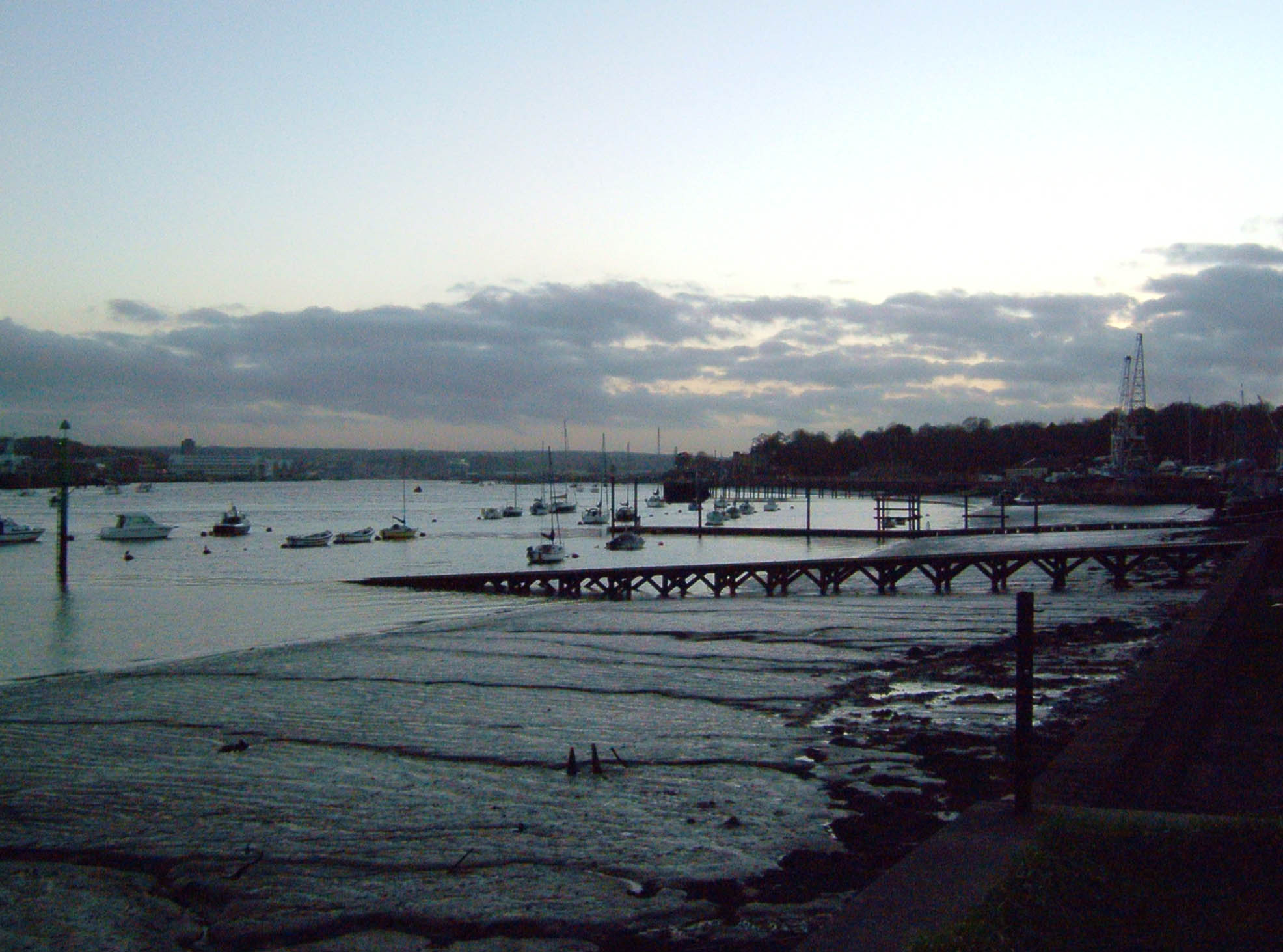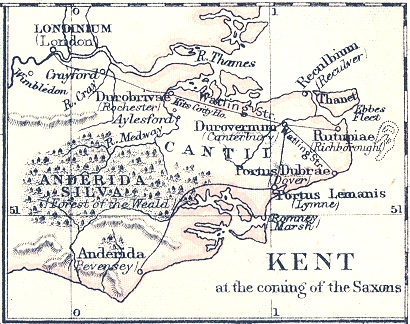|
Saxon Shore Way
The Saxon Shore Way is a long-distance footpath in England. It starts at Gravesend, Kent, Gravesend, Kent, and traces the coast of South-East England as it was in Roman Empire, Roman times as far as Hastings, East Sussex, in total. This means that around Romney Marsh the route runs significantly inland from the modern coastline. History The line of the Saxon Shore Forts, Roman fortification that the route traces includes ancient forts, modern towns, nature reserves and coastline: four Roman forts built in the fourth century lie along the route, at Reculver, Richborough, Dover and Lympne. At Seasalter there is an internationally important area for geese, ducks, and waders. The diversity of scenery along the route includes the wide expanses of marshland bordering the Thames and River Medway, Medway estuaries, the White cliffs of Dover, and panoramic views over Romney Marsh from the escarpment that marks the ancient coastline between Folkestone and Rye. The Saxon Shore Way was ... [...More Info...] [...Related Items...] OR: [Wikipedia] [Google] [Baidu] |
South East England
South East England is one of the nine official regions of England, regions of England that are in the ITL 1 statistical regions of England, top level category for Statistics, statistical purposes. It consists of the nine counties of england, counties of Berkshire, Buckinghamshire, East Sussex, Hampshire, the Isle of Wight, Kent, Oxfordshire, Surrey and West Sussex. South East England is the third-largest region of England, with a land area of , and is also the most populous with a total population of in . South East England contains eight legally city status in the United Kingdom, chartered cities: Brighton and Hove, Canterbury, Chichester, Milton Keynes, Oxford, Portsmouth, Southampton and Winchester. Officially it does not include London, which is a separate region. The geographical term for "South East England" may differ from the official definition of the region, for example London, Bedfordshire, Hertfordshire and Essex are sometimes referred to as being in the south ... [...More Info...] [...Related Items...] OR: [Wikipedia] [Google] [Baidu] |
River Medway
The River Medway is a river in South East England. It rises in the High Weald AONB, High Weald, West Sussex and flows through Tonbridge, Maidstone and the Medway conurbation in Kent, before emptying into the Thames Estuary near Sheerness, a total distance of . About of the river lies in East Sussex, with the remainder being in Kent. The Medway has a Drainage basin, catchment area of , the second largest in southern England after the River Thames, Thames. The map opposite shows only the major tributaries: a more detailed map shows the extensive network of smaller streams feeding into the main river. Those tributaries rise from points along the North Downs, the Weald and Ashdown Forest. Tributaries The major tributaries are: * River Eden, Kent, River Eden * River Bourne, Kent, River Bourne, known in the past as the Shode or Busty * River Teise, major sub-tributary River Bewl * River Beult * Loose Stream * River Len Minor tributaries include: * Wateringbury Stream * East Mal ... [...More Info...] [...Related Items...] OR: [Wikipedia] [Google] [Baidu] |
Strood
Strood is a town in the unitary authority of Medway in Kent, South East England. Strood forms a conurbation with neighbouring towns Chatham, Kent, Chatham, Rochester, Kent, Rochester, Gillingham, Kent, Gillingham and Rainham, Kent, Rainham. It lies on the northwest bank of the River Medway at its lowest bridging point. Strood began as a manor then chapelry of Frindsbury until gaining its own parish status in 1193. Today Frindsbury is effectively, in all but a few associations such as in the Church of England, the northern part of Strood. Strood's history has been dominated by the river and facing port-associated towns, particularly its road and rail Rochester Bridge, bridges since the Roman Britain, Roman era to Rochester and the two other Medway Towns immediately adjoining and beyond from the north-east quarter of Kent to London and the rest of Britain. It has a mixed retail and leisure area at its heart. History Pre-Conquest Strood was part of Frindsbury until 1193. It ... [...More Info...] [...Related Items...] OR: [Wikipedia] [Google] [Baidu] |
Hoo Peninsula
The Hoo Peninsula is a peninsula in Kent, England, separating the estuaries of the rivers Thames and Medway. It is dominated by a line of chalk, clay and sand hills, surrounded by an extensive area of marshland composed of alluvial silt. The name ''Hoo'' is a Saxon word believed to mean 'spur of land' or refers to the 'distinct heel-shape of the ridge of hills' through Hoo. Hoo features in the Domesday Book.''The Place Names of Kent'', Judith Glover, 1976, Batsford. The peninsula is home to internationally and nationally protected wildlife sites as well as industrial facilities and energy industries. History The Romans have been credited with the first two attempts at building a sea wall. The subsequent draining of the marshes created pastureland to support sheep. The area is rich in archaeology. Bronze Age implements and Jutish cemeteries have been found on the peninsula, and Roman pottery at Cooling. It was once the point of departure across the ancient Saxon fording ... [...More Info...] [...Related Items...] OR: [Wikipedia] [Google] [Baidu] |
Cliffe-at-Hoo
Cliffe is a village and former civil parish, now in the parish of Cliffe and Cliffe Woods, in the borough of Medway in the ceremonial county of Kent, England. It is on the Hoo Peninsula, reached from the Medway Towns by a three-mile (4.8 km) journey along the B2000 road. Situated upon a low chalk escarpment overlooking the Thames marshes, Cliffe offers views of Southend-on-Sea and London. In 774 Offa, King of Mercia, built a rustic wooden church dedicated to St Helen, a popular Mercian saint who was by legend the daughter of Coel ("Old King Cole") of Colchester. Cliffe is cited in early records as having been called ''Clive'' and ''Cliffe-at-Hoo''. In 1961 the parish had a population of 2239. On 1 April 1997 the parish was abolished to form "Cliffe & Cliffe Woods", part of which consisting of Frindsbury Extra. Ancient Saxon town Clovesho, or Clofeshoch, was an ancient Saxon town, in Mercia and near London, where the Anglo-Saxon Church is recorded as holding the import ... [...More Info...] [...Related Items...] OR: [Wikipedia] [Google] [Baidu] |
Cliffe Fort
Cliffe Fort is a disused artillery fort built in the 1860s to guard the entrance to the River Thames from seaborne attack. Constructed during a period of tension with France, it stands on the south bank of the river at the entrance to Cliffe Creek in the Cliffe-at-Hoo, Cliffe marshes on the Hoo Peninsula in North Kent, England. Its location on marshy ground caused problems from the start and necessitated changes to its design after the structure begin to crack and subside during construction. The fort was equipped with a variety of large-calibre artillery guns which were intended to support two other nearby Thamesside forts. A launcher for the Brennan torpedo—which has been described as the world first practical guided missile—was installed there at the end of the 19th century but was only in active use for a few years. Cliffe Fort saw about 60 years of usage as an artillery fort, from its completion in 1870 to its disarmament in 1927. It was repurposed during World War II to ... [...More Info...] [...Related Items...] OR: [Wikipedia] [Google] [Baidu] |
Higham, Kent
Higham is a village, civil parish and Wards and electoral divisions of the United Kingdom, electoral ward in the borough of Gravesham in Kent, England. The village lies south-east of Gravesend and just north-west of Strood, in Medway. The civil parish had a population of 3,938 at the 2001 Census, increasing slightly to 3,962 at the 2011 Census. Higham is formally twinned with the Ukrainian villages of Novyi Bilous rural hromada, Novyi Bilous in the Chernihiv Oblast, Chernihiv Region of Ukraine. History A Ancient Rome, Roman grave and artifacts have been found at the north end of the village. The priory dedicated to Mary (mother of Jesus), St. Mary was built on land granted to Mary, daughter of King Stephen of England, Stephen. In 1148, the nuns of St Sulphice-la-Foret, Brittany, moved to Higham. Higham priory was also known as Lillechurch.(Medieval Religious Houses, p. 259). On 6 July 1227, King Henry III of England, Henry III confirmed the royal grant to the abbey of St. Mar ... [...More Info...] [...Related Items...] OR: [Wikipedia] [Google] [Baidu] |
Wealdway
The Wealdway, Kent and East Sussex, is a public footpath that runs for 83 miles / 134 km from Gravesend, Kent on the Thames estuary, to the A259 at Eastbourne, 3 km north of Beachy Head.The Wealdway 80 miles long distance footpath, 1981, pub Wealdway Steering Group. Interrelation with other long-distance routes This is the only north-south route from the Thames Estuary east of London and west of the Medway Towns. It crosses the North Downs, Higher and Lower, Kentish and Sussex Weald (see Kent long distance walks here) and starts at Gravesend. Here there is a regular ferry link to Tilbury and routes north of the Thames. At the south is Eastbourne the start of the South Downs Way overlooking the south coast. The route provides access to coast routes: a return circuit for users of the Saxon Shore Way. History The Wealdway was conceived in 1970 by members of the Ramblers' Association. The first route descriptions were published in the mid seventies, but the poor state of th ... [...More Info...] [...Related Items...] OR: [Wikipedia] [Google] [Baidu] |
Longest Day3 Over The Swale
Long may refer to: Measurement * Long, characteristic of something of great duration * Long, characteristic of something of great length * Longitude (abbreviation: long.), a geographic coordinate * Longa (music), note value in early music mensural notation Places Asia * Long District, Laos * Long District, Phrae, Thailand * Longjiang (other) or River Long (lit. "dragon river"), one of several rivers in China * Yangtze River or Changjiang (lit. "Long River"), China Elsewhere * Long, Somme, France People * Long (Chinese surname) * Long (Western surname) Fictional characters * Long (''Bloody Roar''), in the video game series * Long, Aeon of Permanence in Honkai: Star Rail Sports * Long, a fielding term in cricket * Long, in tennis and similar games, beyond the service line during a serve and beyond the baseline during play Other uses * , a U.S. Navy ship name * Long (finance), a position in finance, especially stock markets * Lòng, name for a laneway in Shang ... [...More Info...] [...Related Items...] OR: [Wikipedia] [Google] [Baidu] |
Saxon Shore
The Saxon Shore () was a military command of the Late Roman Empire, consisting of a series of fortifications on both sides of the English Channel. It was established in the late 3rd century and was led by the " Count of the Saxon Shore". In the late 4th century, his functions were limited to Britain, while the fortifications in Gaul were established as separate commands. Several well-preserved Saxon Shore forts survive in east and south-east England. Background During the latter half of the 3rd century, the Roman Empire faced a grave crisis: Weakened by civil wars, the rapid succession of short-lived emperors, and secession in the provinces, the Romans now faced new waves of attacks by barbarian tribes. Most of Britain had been part of the empire since the mid-1st century. It was protected from raids by native Celtic Britons in the north by the Hadrianic and Antonine Walls, while a fleet of some size was also available. However, as the frontiers came under increasing extern ... [...More Info...] [...Related Items...] OR: [Wikipedia] [Google] [Baidu] |
Isle Of Thanet
The Isle of Thanet () is a peninsula forming the easternmost part of Kent, England. While in the past it was separated from the mainland by the Wantsum Channel, it is no longer an island. Archaeological remains testify to its settlement in ancient times. Today, it is a tourist destination, and has an active agricultural base. Etymology The island of Thanet is mentioned as ''Tonetic'' (c. AD 150; the TON- of this form was misread as TOΛI-, hence it appears as ''Toliatis'' in the surviving manuscripts of Ptolemy); ''Tanat's'', ''Athanatos'' and ''Thanatos'' (in various copies of 3rd C AD, Solinus); ''Tanatos'' (AD 731); ''Tenid'' in 679 and ''Tenet'' (e.g. charters of AD 679, 689 and thereafter); and the Old Welsh forms ''Tanet'' and ''Danet'', found in the ''Historia Brittonum'' (c. AD 829/30) and Armes Prydein (c. AD 930). Standard reference works for English place-names (such as Eilert Ekwall's ''Concise Oxford Dictionary of English Place-Names'') state the name ''Tane ... [...More Info...] [...Related Items...] OR: [Wikipedia] [Google] [Baidu] |








